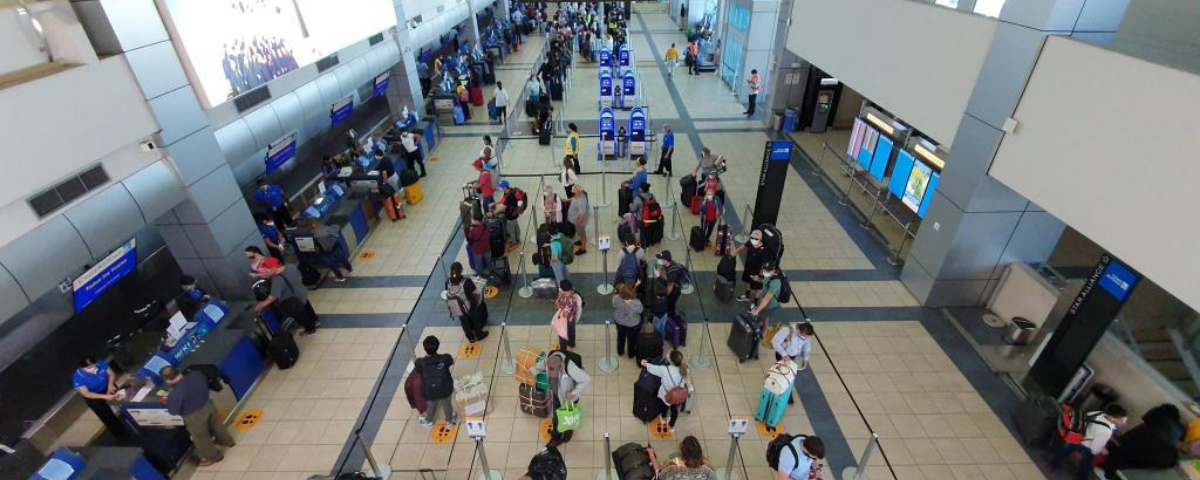The Latin American and Caribbean Air Transport Association (ALTA) announces that airlines operating in the Latin American and Caribbean market transported 19.7 million passengers in September, 30.2% less than their 2019 level, or 8.5 million fewer passengers than in the same month of 2019. This 30% drop is the smallest decrease since the pandemic began in 2020. Traffic (RPK) decreased 37.8% and capacity (ASK) decreased 32.4%, bringing load factor to 75.8 %, 8.7 percentage points less than in the same month of 2019.
Traffic to and from Latin America and the Caribbean
In September 3.4 million passengers traveled from Latin America and the Caribbean to other regions of the world. Traffic (RPK) decreased 43.5% and capacity (ASK) decreased 33.1%, bringing load factor to 74.5%.
New challenges
The International Air Transport Association (IATA) is focusing on standards, digitizing and addressing the “There will be challenges as ground handling operations accelerate to meet the growing demand as the recovery of the air transport industry advances. COVID-19 aviation. Overcoming labor shortages, ensuring safety with strict adherence to global standards, and digitization and modernization will be critical to achieving a scalable restart, ”said Monika Mejstrikova, IATA’s Director of Ground Operations, speaking at the 33rd Conference of IATA Land Management (IGHC), which was inaugurated in Prague.
Human Resources
Ground service providers face severe skills shortages and challenges in retaining and recruiting staff.
“Many qualified employees have left the industry and will not return. And recruiting, training and accrediting new staff can take up to six months. Therefore, it is critical that we retain current staff and find more efficient ways to bring in new staff, ”said Mejstrikova, who also outlined a number of priority solutions.
To retain qualified personnel, governments should include land workers in wage subsidy programs.
To speed up training processes, the use of competency-based training, assessments and online training formats should be increased, and training requirements harmonized.
To increase the efficiency of staff utilization, a training passport should be developed that mutually recognizes the skills of operators on the ground, airlines and/or airports.
Safety
Global standards are the foundation for safe operations. Two key tools for ground operators are the IATA Ground Operations Manual (IGOM) and the IATA Ground Operations Safety Audit (ISAGO).
IGOM: IATA called on the groundhandling industry to accelerate the global adoption of IGOM to ensure operational consistency and safety around the world. To support this, IATA has launched the IGOM portal. An easy-to-use online platform where airlines and ground operators can share the results of their gap analysis between company procedures and IGOM, offering a global benchmark for harmonization and driving efficiency.
ISAGO: IATA urged governments to recognize ISAGO in their supervisory regulatory frameworks. This will generate significant benefits, including greater harmonization, the implementation of the Safety Management System (SMS) by ground operators, and the reduction of duplicate audits faced by providers.
“The goal is the global adoption of IGOM and ISAGO. The IATA online portal will give a boost to this effort, ”Mejstrikova said.
Digitization and modernization
Digitization can drive process improvements that will be critical to improving both sustainability and productivity. A key driver of digitization / modernization is the CEDAR (Connected Ecological Digital Autonomous Ramp) initiative that focuses on:
- Digitization of aircraft rotation
- Modernization of ground support equipment and processes
- Improved booth design
“Leveraging data to improve safety and efficiency is crucial for the groundhandling industry. CEDAR is the model to address this. The overall goal is to be able to make data-driven operational decisions that will reduce costs, improve performance and contribute to zero net industry engagement, ”Mejstrikova said.
Written by


